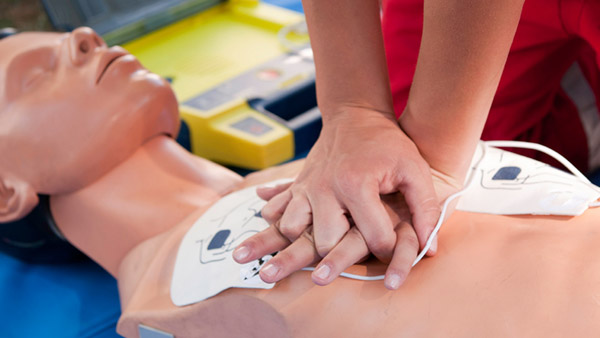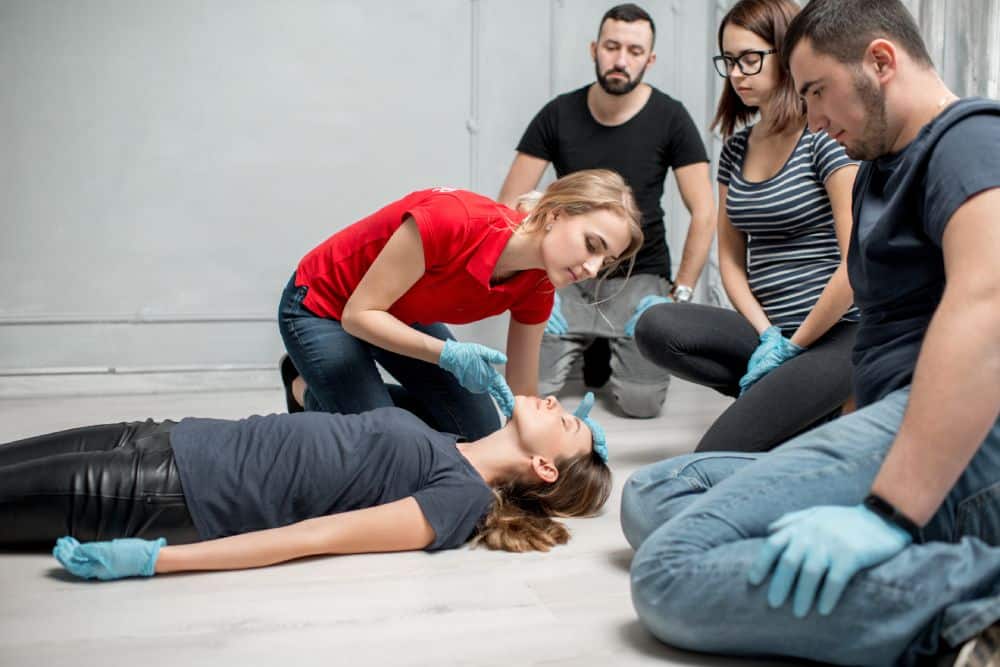Introduction
In our quickly changing world, the importance of emergency treatment can not be downplayed. Whether in a corporate setting, school, or in your home, understanding how to react efficiently throughout a clinical emergency situation can conserve lives. Nevertheless, with terrific duty comes the requirement for recognizing the guidelines regulating emergency treatment methods. This write-up aims to give a thorough overview of first aid guidelines that every company should recognize. We will certainly delve into different facets-- from vital certifications to the nuances of CPR programs-- guaranteeing you leave geared up with expertise and confidence.

Table of Contents

- 1.1 Significance of First Aid Training 1.2 Legal Effects of First Aid
- 2.1 Kinds of Emergency Treatment Courses 2.2 Picking the Right Training Course for You
- 3.1 Comprehending mouth-to-mouth resuscitation Techniques 3.2 Relevance of Mouth-to-mouth Resuscitation Certification
- 4.1 Advantages of Consolidated Training 4.2 How to Discover an Integrated Course
- 5.1 Who Needs an Emergency Treatment Certificate? 5.2 Credibility and Revival of Certifications
- 6.1 National Security Council (NSC) 6.2 American Red Cross Standards
- 7.1 OSHA Standards for Workplace Safety 7.2 Company Obligations in First Aid Training
- 8.1 Basic Steps in Emergency Response 8.2 Role of a First Responder
- 9.1 Common Misconceptions regarding First Aid 9.2 Conquering Obstacles to Training
- 10.1 Virtual Discovering Opportunities 10.2 Developments in Emergency Treatment Equipment
Understanding Emergency treatment Regulations
Importance of First Aid Training
First help training is not just a valuable skill; it's an important part of our social fabric that empowers people to act decisively throughout emergencies.
- Life-Saving Skills: Recognizing basic emergency treatment methods can considerably increase survival rates in emergencies. Confidence Building: Individuals trained in first aid often feel much more certain and prepared when confronted with clinical situations.
Legal Implications of First Aid
Understanding the lawful framework bordering emergency treatment is essential for any individual offering help during emergencies.
- Good Samaritan Laws: A lot of states have regulations securing those that provide help voluntarily from lawful obligation, as long as their activities are reasonable and meant to help. Negligence Considerations: If a skilled provider acts recklessly or falls short to carry out required life-saving treatments, they could deal with lawful consequences.
First Aid Flows Overview
Types of First Aid Courses
There are various kinds of first aid programs readily available, each customized to satisfy different needs:
- Basic Life Support (BLS): Ideal for healthcare professionals needing sophisticated skills. Standard First Aid: Covers crucial skills appropriate for nonprofessionals and non-medical personnel. Advanced Heart Life Assistance (ACLS): Targets doctor working with critically unwell patients.
Choosing the Right Course for You
When choosing a course, consider your objectives and scenarios:
- Are you seeking accreditation for office compliance? Do you require skills particular to child care or elderly assistance?
Researching regional providers can help simplify your choice based on place and solutions offered.
CPR and Its Significance
Understanding mouth-to-mouth resuscitation Techniques
Cardiopulmonary resuscitation (MOUTH-TO-MOUTH RESUSCITATION) is just one of the most essential abilities learned in any kind of emergency treatment course:

- Compression Technique: Reliable upper body compressions can maintain blood moving to essential body organs until specialist assistance arrives. Rescue Breaths: While less stressed now due to new guidelines, rescue breaths stay an essential component of conventional mouth-to-mouth resuscitation training.
Importance of CPR Certification
Obtaining certification through recognized organizations makes certain expertise in performing CPR:
- Many employers need existing accreditation as part of their safety and security protocols. It enhances overall self-confidence when dealing with possible cardiac emergencies.
First Aid and CPR Course Integration
Benefits of Consolidated Training
Taking a combined emergency treatment and mouth-to-mouth resuscitation training course provides many advantages:
- It improves training by covering both areas simultaneously. Participants obtain comprehensive knowledge relevant throughout different scenarios.
How to Locate an Integrated Course
Searching for integrated training programs requires some critical planning:
- Look for neighborhood community centers or hospitals supplying such courses. Online systems may also give digital alternatives customized towards active professionals.
First Aid Qualification Requirements
Who Needs a First Aid Certificate?
Various sectors require certification from personnel:
- Educational organizations often call for teachers and trains to hold valid certificates. Healthcare settings demand recurring training among personnel members.
Validity and Renewal of Certifications
Most certifications have expiry days:
- Regularly restoring accreditations ensures that providers remain updated with current practices.
Regulatory Bodies Governing First Aid
National Safety Council (NSC)
The NSC plays a critical role in establishing standards for security training throughout the USA:
- They give sources, products, and assistance for both instructors and learners alike.
American Red Cross Standards
The American Red Cross uses considerable training programs straightened with nationwide criteria:
- Their curriculum includes hands-on practice, making certain participants develop functional skills alongside academic knowledge.
Workplace Rules on First Aid
OSHA Guidelines for Office Safety
The Occupational Safety and Wellness Administration (OSHA) lays out expectations relating to office safety measures:
|Need|Summary|| -------------|-------------|| Accessibility|Employers should guarantee access to sufficient first-aid resources in all times|| Educated Employee|Designated employees must be trained in standard first aid|
Employer Duties in Emergency treatment Training
Employers bear considerable duties worrying worker safety:
- Providing proper training sessions routinely helps minimize workplace injuries.
Emergency Feedback Protocols
Basic Action in Emergency situation Response
An effective emergency action protocol can substantially improve outcomes throughout dilemmas:
Assess the circumstance safely. Call emergency services if needed. Provide essential treatment till specialist assistance arrives.Role of a First Responder
First responders play an important role within emergency situation scenarios by providing prompt help while awaiting sophisticated medical treatment:
- Their timely action often makes a considerable distinction in between life and fatality scenarios.
Challenges in Implementing First Aid Training
Common False impressions regarding First Aid
Misunderstandings bordering first aid can hinder effective actions throughout emergencies:
Myth vs Fact Table
|Misconception|Fact|| ----------------------------------|------------------------------------------|| Just healthcare professionals need to provide emergency treatment|Anybody can learn fundamental methods|| Using an AED is risky|AEDs are designed for public usage|
Overcoming Obstacles to Training
Several obstacles exist that might hamper individuals from pursuing first aid programs;
Key Barriers
- Time Constraints: Hectic timetables make it tough for many people to discover time for training sessions. Financial Limitations: Price might hinder interested candidates from getting involved; nonetheless, many organizations provide subsidized courses or gives especially focused on giving economic relief.
Future Trends in First Aid Training
Virtual Understanding Opportunities
With innovation advancing quickly, on-line platforms have actually gained popularity among learners looking for adaptable choices;
- Real-time simulations permit participants to involve actively without requiring physical presence at traditional venues; This strategy enhances availability while accommodating varied knowing styles!
Innovations in First-Aid Equipment
Emerging innovations are transforming exactly how we approach first-aid prep work;
Examples Include
- Smart Bandages-- complete sensors monitor recovery progress! Mobile Apps-- providing support based upon user input concerning signs and symptoms!
FAQs Concerning Understanding First-Aid Regulations
Q1: What is included in a typical first-aid course?
A normal first-aid training course covers topics such as injury treatment, crack administration, shock therapy, choking interventions, in addition to mouth-to-mouth resuscitation methods tailored in the direction of numerous age groups!
Q2: How typically do I require to renew my mouth-to-mouth resuscitation certification?
Most organizations recommend renewing your accreditation every two years; staying well-informed ensures effective actions during emergencies!
Q3: Can I take an on the internet first-aid course?
Definitely! Several trustworthy companies offer on the internet alternatives allowing students versatility while preserving high-grade criteria with interactive content!
Q4: Exists any type of age requirement for taking these courses?
Usually talking-- no! Kids aged 10 or older can get involved under parental guidance; however-- it's recommended that grownups accompany them throughout lessons!
Q5: Exactly how do I choose in between different companies providing similar courses?
Explore reviews/testimonials from previous guests along with examining accreditation status before choosing; this will guarantee high quality education and learning gave meets sector standards!
Conclusion
In summary-- making sense outta policies surrounding essential areas like 'first-aid' & & 'MOUTH-TO-MOUTH RESUSCITATION' is essential not just professionally however directly as well! As seen throughout this article-- numerous factors add towards guaranteeing correct responsiveness during clinical emergencies consisting of understanding needed certifications-- in addition to recognizing difficulties dealt with whilst applying reliable programs within community/workplace setups alike! By spending time/resources into obtaining proficiency by means of relevant training courses-- you'll be better positioned than ever before-- needs to fate provide its changability knocking at your door! Constantly keep in mind-- the capacity you possess today could potentially conserve somebody Sydney CBD First Aid Course Near Me else's tomorrow!